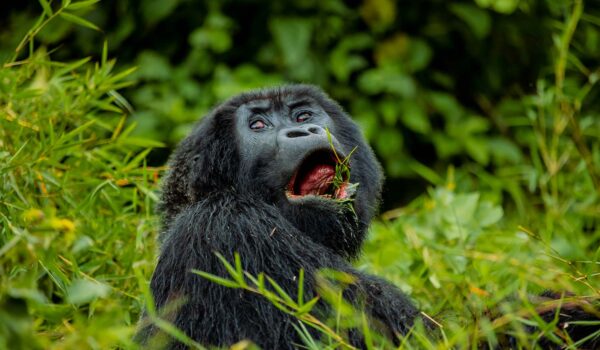Tanzania National Parks
The Northern Safari Circuit
With one of Africa’s largest concentrations of game parks, Tanzania’s Northern Safari Circuit is the most abundant wildlife area in East Africa. For good reason, Tanzania’s most popular tourist destination is the Northern Safari Circuit, which is located near the Kenyan border. The Serengeti National Park, the Ngorongoro Conservation Area, Kilimanjaro, Lake Manyara National Park, and Tarangire National Park are all part of this group of wildlife parks that are comparatively near to one another. Mount Meru, Lake Natron, Ol Doinyo Lengai volcano, and Olduvai Gorge are some of the Northern Safari Circuit has highlights.
Lake Manyara National Park
The beautiful and varied Lake Manyara National Park is home to freshwater. Lake Manyara safari experience includes outstanding wildlife viewing, breathtaking landscapes, and fantastic bird watching.
A 125-square-mile (325-square-kilometer) animal hotspot, Lake Manyara is most famous for its tree-climbing lions. Lake Manyara is a savannah, woodland, and lush forest fantasy that is only one and a half hours from Arusha. Hippos, buffalo, elephants, giraffes, leopards, cheetahs, impalas, and other primates are among the park’s many species. A great safari stopover is Lake Manyara National Park, which is home to over 400 bird species, including flamingos and pelicans who exploit the soda waters.
The Ngorongoro Conservation Area
A wildlife reserve rich in animals, the Ngorongoro Conservation Area offers amazing safari experiences. On the eastern side of the Serengeti in northern Tanzania, Ngorongoro has 8,292 square kilometers of woodlands, savannah grasslands, wetlands, and lake habitats. The Ngorongoro Crater is the crown treasure.
Known as “Africa’s Garden of Eden,” the Ngorongoro Crater is a UNESCO World Heritage Site and the biggest volcanic crater in the world, covering an area of around 260 square kilometers. According to reports, the Ngorongoro Crater has the largest number of mammalian predators in Africa and is home to over 25,000 big creatures. There are many African animal species visible as they descend 2,000 feet to the crater bottom, including buffalo, zebras, rhinos, lions, elephants, wildebeest, eland, and Thomson’s gazelles.
The Ndutu Plains are a section of the great migratory path, and the Ngorongoro Conservation Area is next to the Serengeti. The herds of wildebeest return in December, and in January and February they give birth. During this time, an incredible 8,000 wildebeest are born per day. This is a fantastic location to see the savage and majestic drama of the African plains, as predators and scavengers descend to exploit the surplus of easy food due to the quantity of susceptible prey.
Olduvai Gorge, Olmati Crater, Empaki Crater, Ngoitokitok Spring, nearby Lake Natron, and the gneiss inselberg of Naseru Rock are some of the other features of the Ngorongoro Conservation Area.
Tarangire National Park
Tarangire National Park is a vast and untamed natural region of breathtaking beauty that is often disregarded. As the seasons change, wildlife moves between Tarangire Park, which is southeast of Lake Manyara. The majority of safari tourists go via Tanzania’s northern safari circuit before continuing on to the Serengeti, making Tarangire National Park an unknown treasure despite the bustling Northern Safari Circuit.
The greatest time to visit Tarangire National Park is during the dry season, when massive herds of elephants gather along the Tarangire River’s permanent water. With some of Tanzania’s greatest wildlife densities, Tarangire is well-known for its up-close experiences with 300-strong elephant herds. The fauna of Tarangire includes a range of predators, eland, impala, buffalo, zebra, hartebeest, and migratory wildebeest in addition to the elephants. Additionally, Tarangire is home to more than 500 bird species, including Tanzanian endemics like yellow-collared lovebirds and ashy starlings.
Seasonal marshes, floodplains, riverine forest, woodland, and grassland make up Tarangire National Park’s 2,800 km² (1,000 mi²). Tarangire is a stunningly varied park that is just begging to be explored. It is dotted with stately acacias and magnificent baobabs, and it is surrounded by volcanic mountains in the distance.
Ruaha National Park
Ruaha National Park, is one of Tanzania’s biggest national parks, measuring more than 20,000 square kilometers in size and provides an unconventional safari experience. The park’s distant location adds to its untainted beauty, with rocky terrain that includes thick shrubbery, kopjes, and river systems. Ruaha is one of the greatest locations to witness African wild dogs, an endangered species, and is well-known for its big numbers of buffalo and elephants. Along with a high density of predators like lions and leopards, the park is home to a variety of bird species.
Selous Game Reserve (Nyerere National Park)
One of Africa’s biggest protected regions, the Selous Game Reserve (now Nyerere National Park) covers more than 50,000 square kilometers. It is also known for its unique landscape, which supports a wide variety of species and contains lakes, rivers, and wetlands. Hippos, crocodiles, and many bird species rely on the Rufiji River, which runs through Selous. Because Selous is less congested than other parks, visitors may have a more personal and uncommercialized encounter with animals. Elephants, lions, and the endangered black rhino are among the many species that call it home.
Gombe Stream National Park
Despite being just 35 square kilometers, Gombe Stream National Park is well-known for being the location of Dr. Jane Goodall’s ground-breaking chimpanzee study. Gombe offers tourists interested in monkey behavior a unique experience along the beaches of Lake Tanganyika. Visitors may go around the park’s mostly forested area to see chimpanzees in their natural environment. Gombe, which is home to several fish and bird species as well as other primate species, provides evidence of Tanzania’s biodiversity.

